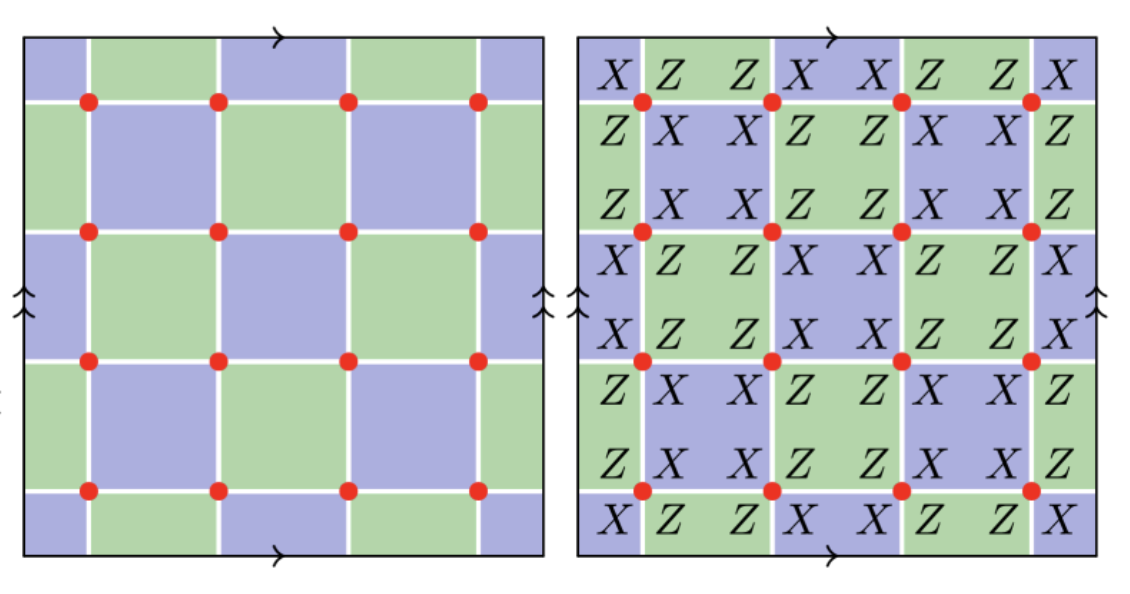Insider Brief
- Quantinuum releases a research paper introducing an innovative technique of “genon braiding” to execute fault-tolerant gates using efficient codes.
- Genon braiding is a brand new method that leverages the unique properties of topological order to perform robust quantum operations.
- This is the latest in a string of papers that shows the company’s progress toward quantum computers that can be used for real-world problems.
Quantinuum — which has been on a quantum AI and fault tolerance research roll this month — report on yet another research development, this time detailing an advanced quantum error correction technique that the team says is pushing the industry ever closer toward practical quantum computing. The work also hints at the way the company is tying together its multiple research approaches — from topological quantum computing to record-breaking fidelity that takes advantage of mid circuit measurement to quantum error correction — to build quantum computers that can make calculations in spite of environmental noise.
This latest work, detailed in a company blog post and fully covered in a complementary research paper posted on ArXiv, focuses on the innovative technique of “genon braiding” to execute fault-tolerant gates using efficient codes.
The work aims right at quantum computing’s Achilles heel — errors. In classical computing, hardware robustness and error correction methods like bit duplication make achieving fault tolerance relatively straightforward. However, quantum computing faces unique challenges. Quantum hardware is far more delicate, requiring precise control of quantum states, and the no-cloning theorem prohibits direct copying of qubits, the team explains.

Ilyas Khan, Quantinuum founder and Chief Product Officer writes in an email interview: “One of the more interesting developments that I would highlight here is the emerging — and very obvious — point that theoretical ideas can only really be instantiated with full access to the ‘metal’ and that real acceleration will benefit from an early push into genuine ‘co-design’. The Genon code is astonishingly impactful and we will be hearing a lot more about its ability to lift performances across the board, and this will be highlighted alongside all our other work in this field ranging from error mitigation all the way through to examining natively fault tolerant qubits that we create through the exploitation of our hardware and generate non-abelian anyons’.”
Genon Braiding: A New Approach
Quantinuum’s advance focuses on genon braiding — a method that leverages the unique properties of topological order to perform robust quantum operations.
In this braiding technique, researchers manipulate genons, which are twists or defects in topological codes. By braiding these genons around each other, logical quantum information can be encoded and manipulated fault-tolerantly, which then makes it easier to implement high-rate error-correcting codes and that, eventually, means less physical qubits per logical qubit.
This advance can significantly impact scaling, making quantum computers more practical and efficient, and demonstrates low overheads compared to quantum error correction approaches in the current literature, according to the team at Quantinuum, a full-stack quantum computing company formed from Honeywell and Cambridge Quantum in 2021.
The Theory Behind Genon Braiding
To take a step back: the research paper delves into the theoretical foundations of genon braiding. It explains that one of the main challenges in quantum error correction is balancing the protection of quantum information from errors with the ability to manipulate this protected information. Achieving this balance is essential for performing computational tasks, the paper notes.
The concept of genons or twists in topological codes plays a central role in this technique. It’s also a point where the beauty of scientific discovery meets the efficiency of practical computational power, according to the team.
The scientists write in the post: “What exactly ‘genons’ are, and how they are braided, is beautiful and complex mathematics – but the implementation is surprisingly simple. Inter-block logical gates can be realized through simple relabeling and physical operations. ‘Relabeling’, i.e. renaming qubit 1 to qubit 2, is very easy in Quantinuum’s QCCD architecture, meaning that this approach to gates will be less noisy, faster, and have less overhead. This is all due to our architectures’ native ability to move qubits around in space, which most other architectures can’t do.”
To dive deeper, the genons are associated with 3-valent vertices — or three-pointed connections — in topological codes and can be manipulated through braiding to perform logical Clifford gates. These gates are a set of operations that can be performed on encoded qubits within a quantum error-correcting code. They are important because they can be implemented fault-tolerantly, in other words they can function correctly even when there are small errors.
According to the scientists, genons are not arbitrary constructs but are derived from specific symmetrical properties in the quantum system, according to the paper. The team explains that genons arise from the properties of domain walls in topological order, which exhibit symmetry that can be exploited for fault-tolerant operations.
Practical Implementation on Quantinuum’s H1-1 Quantum Computer
Quantinuum has successfully demonstrated genon braiding on their H1-1 quantum computer, a trapped-ion device that allows for high connectivity through ion transport. This capability is essential for efficiently realizing the permutations required for implementing fault-tolerant gates without significant overhead, according to the blog post and the research paper.
The H1-1 device uses 20 ytterbium ions for physical qubits and 20 barium ions for sympathetic cooling, executing gates via stimulated Raman transitions with high fidelity. This setup enables the realization of genon protocols with minimal noise and high efficiency, showcasing the potential of genon braiding for practical quantum error correction, the team writes in their ArXiv paper.
Experimental Results and Proof-of-Concept
Quantinuum’s team conducted a series of proof-of-concept experiments on the H1-1 system. They demonstrated all single-qubit Clifford operations using genon braiding and performed two types of two-qubit logical gates equivalent to CNOTs. These experiments demonstrate that genon braiding works in practice and is complementary to and therefore enhancing well-understood codes such as the Steane code, according to the blog post.
The research also includes the construction of a ‘symplectic double’ — which effectively doubles the number of qubits involved — allowing logical Clifford operations on the base code to be lifted to logical operations on the total code. This method enhances fault tolerance and demonstrates the versatility of the genon braiding technique, the paper states.
Implications for Quantum Computing
Scientifically beautiful and practically important — there’s still more.
The work demonstrates the importance of co-design, where error correction codes are tailored to specific hardware capabilities. Quantinuum’s approach leverages their unique hardware architecture to implement these advanced error correction techniques efficiently.
“This is part of a larger effort to find fault-tolerant architectures tailored to Quantinuum’s hardware. Quantinuum scientist and pioneer of this work, Simon Burton, put it quite succinctly: ‘Braiding genons is very powerful. Applying these techniques might prove very useful for realizing high-rate codes, translating to a huge impact on how our computers will scale,'” the team explains in their blog post.
The Quantinuum Connection
There is some sense that the 370+ scientists and engineers at Quantinuum are engaged in a little scientific “braiding” of their own, tying multiple research strands from across the organization together to knit a multilayered approach to fault tolerance.
For example, this work is directly related to and inspired by Quantinuum’s prior research on non-Abelian anyons, which are particles that exhibit unique quantum statistics and are essential for certain topological quantum computing approaches. By leveraging insights from these previous studies, Quantinuum has been able to advance the understanding of genon braiding.
This new research also fits into Quantinuum’s broader effort in error mitigation and correction, showcasing their ongoing commitment to developing robust and scalable quantum computing solutions that can withstand errors and enhance computational reliability.
Quantinuum researchers involved in the work include Simon Burton, Elijah Durso-Sabina and Natalie C. Brown, who report to Khan.
For a fuller and more technical explanation of the work than this summary can provide, please review the paper in its entirety.

















